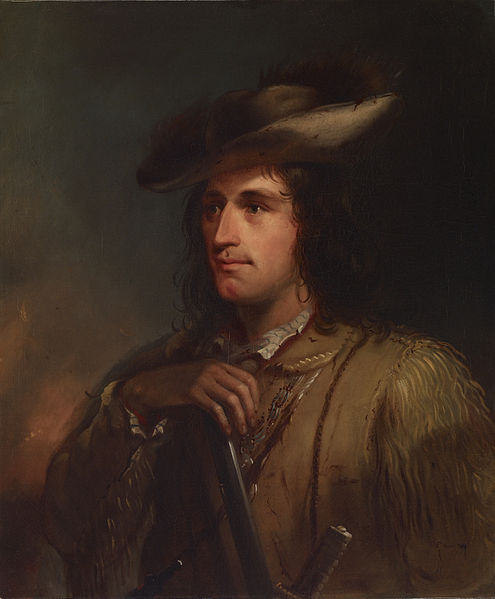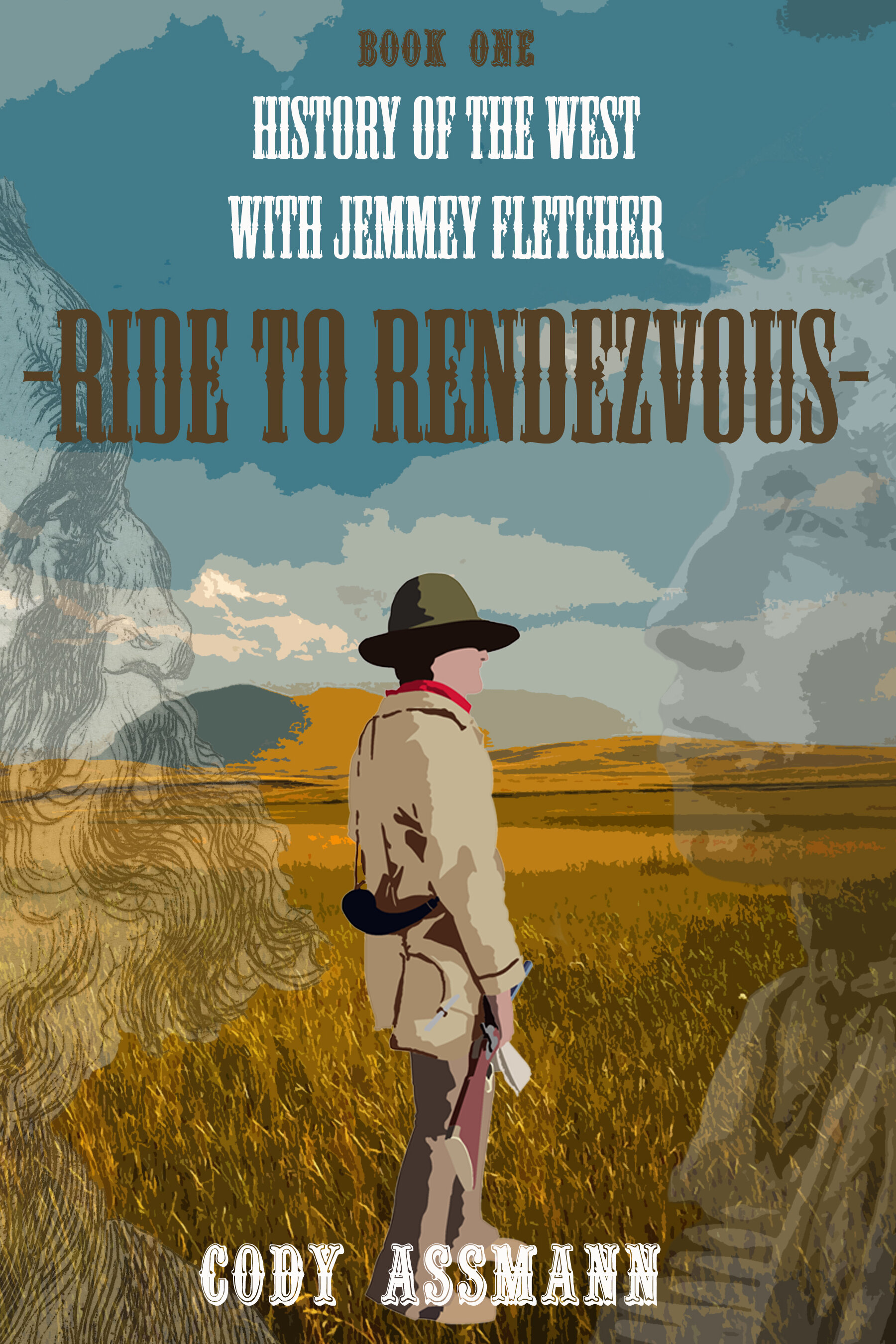Dressed for Success; Clothing of the Mountain Men
Clothing of the mountain men was much more than just a fashion statement.
Image via wikicommons: https://commons.wikimedia.org/wiki/File:Alfred_Jacob_Miller_-_Portrait_of_Antoine_-_Walters_372573.jpg
Sometimes, but not always, clothing can tell you a lot about a person. This is especially true when you talk about occupational clothing, because occupational clothing generally serves a purpose of some sort. Doctors, for example, wear long white coats with many pockets. This allows them to not only carry many of the tools they need each day, but also displays the high level of cleanliness they strive for. Carpenters on the other hand, tend to wear tough clothing, tool belts, leather boots, and hard hats for obvious reasons. It works this way with many professions and always has. In fact, the clothing of the mountain men was no different.
These days we have a different relationship with our clothes than people used to. We seem to mostly dress for fashion or comfort. While mountain men certainly paid attention to fashion and wanted to be comfortable, there were other criteria they had to consider for their clothing as well. For one thing, trappers had to be concerned with the function of their clothing. Their clothing was their gear. This idea of clothing being gear doesn’t appear to be widespread today. In fact, the slogan of one popular brand of hunting clothes claims they are, “Turning Clothing into Gear” as if that is a new concept. Well, I hate to say it, but an outdoorsman’s clothing has always been their gear. It is their first layer of defense against the elements. Being outdoorsmen, mountain men knew their clothing was the first layer of defense against all the bugs, thorns, cactus, rain, wind, and other elements they had to withstand.
Trappers also had material decisions to make with their clothing. Since their activities took them far from civilization, mountain men had to be able to recreate clothing from materials found in the wild. As a result, these men often wore buckskin and fur clothing when they had to. That being said, mountain men also wore shirts, pants, shoes, and hats produced back east when they could pick them up at rendezvous. Like individuals today, trappers also had different styles. Some wore more manufactured goods like cloth pants, shirts, and brogans. Others adopted the functional clothing of the Native Americans they lived among and were clad head to toe in buckskins. It simply depended on the individual.
There are several ways to accurately learn about mountain men clothing. If you are reading History of the West with Jemmey Fletcher; Ride to Rendezvous, this article may help you better accurately imagine how the characters dressed. In each sub-section, let’s take a look at the different approaches to learning accurately about mountain man clothing.
Paintings
Perhaps the easiest way to study clothing of the mountain men is to study artwork of artists who traveled west. Two men, Alfred Jacob Miller and Rudolph Friederich Kurz, captured a variety of different images depicting trappers. These artists show a variety of different clothing styles in their artwork. Here is one of Miller’s most famous paintings depicting clothing of the mountain men. Click on this link to access more of his images.
Image via wikicommons: https://commons.wikimedia.org/wiki/File:Alfred_Jacob_Miller_-_Trappers_-_Walters_37194029.jpg
There are a few things to point out in this image. First, notice how the character in front is wearing quite a lot of buckskin. He has a buckskin coat, pants, and moccasins. In addition, the strange hat he is wearing also appears to be made from buckskin material. On the other hand, look closely and notice that his shirt appears to be manufactured. This is a pretty good example of how many mountain men probably dressed.
Here is a Kurz image. Focus on the top plate to get a good look at the mountain men depicted. Click on this link to access more of his images.
Image via wikicommons: https://commons.wikimedia.org/wiki/File:The_Kurz_Sketchbook_Plate_11.jpg
In the plate you probably noticed that all three men are dressed differently. All three have a different style of hat and only the man in the back is wearing the style of hat you might imagine they wore. You might also again notice the shirts that appeared to be manufactured.
Journals
Another way to learn about clothing of the mountain men is to read journals of people who traveled west and met them. Likely the most famous entry about the dress of trappers comes from Rufus Sage in 1841. Here is the entry he wrote after first meeting a real trapper:
His dress and appearance are equally singular. His skin, from constant exposure, assumes a hue almost as dark as that of the Aborigine, and his features and physical structure attain a rough and hardy cast. His hair, through inattention, becomes long, coares, and bushy, and loosely dangles upon his shoulders. His head is surmounted by a low crowned wool-hat, or a rude substitute of his own manufacture. His clothes are of buckskin, gaily fringed at the seams with strings of the same material, cut and made in a fashion peculiar to himself and associates. The deer and buffalo furnish him the required covering for his feet, which he fabricates at the impulse of want. His waist is encircled with a belt of leather, holding encased his butcher-knife and pistols-while from his neck is suspended a bullet-pouch securely fastened to the belt in front, and beneath the right arm hangs a powder-horn transversely from his shoulder, behind which, upon the strap attached to it, are affixed his bullet-mould, ball-screw, wiper, awl, &c. With a gun-stick made of some hard wood, and a good rifle placed in his hands, carrying from thirty to thirty-five balls to the pound, the reader will have before him a correct likeness of a genuine mountaineer, when fully equipped.
As Sage notes, reading this passage should give the reader a good idea of what a mountain man looked like.
Trade Inventories
Finally, if you want to learn about clothing of the mountain men you can reference the trade inventories of the time. Generally speaking, the pack trains that headed west kept records of what they bought and sold at each rendezvous. Although scanning through these inventories might not be the most stimulating way to spend your time, it is a great way to learn about the time period. Fortunately, one organization, The American Mountain Men, has uploaded many of the business records online. You can access them and review the trade goods by opening this link. When reading through the lists, pay close attention to what they were selling and in what quantity and color. By doing so, you can gain a more accurate idea of their dress.
If you are interested in seeing more visuals, check out this video link. The men are members of the American Mountain Men and must accurately depict clothing when doing living history.
In the end, if you are learning about the mountain men, it helps to understand their clothing. Researching that clothing will not only give you a more accurate picture in your head, it can also reveal truths about the time period. In the end, trappers were one of those groups of people whose clothing reflected a lot about their lives.




